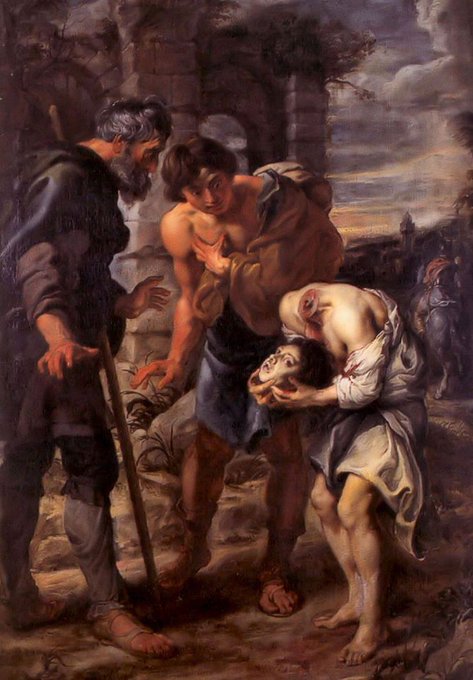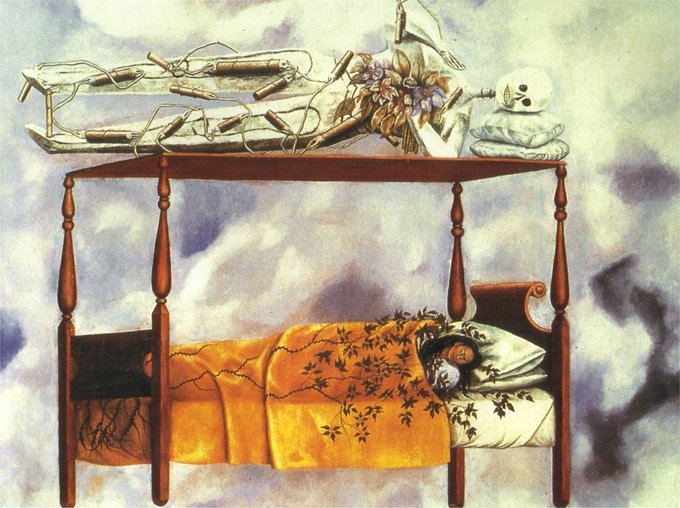Miracle of San Giusto, P. Rubens (1635-40).
"Cephalophores" are saints who, upon being beheaded, picked up their own heads. According to tradition, the head spoke, prayed, or accused the executioners; usually, the saint took it to the point where he wanted his church to be built.
@MrEwanMorrison His landscapes/architectures are always hauntingly beautiful. I have also always loved this surrealist tree, and his quite famous entwined lovers. Beksinski unfortunately suffered a very tragic death.
@MrEwanMorrison @StaceyCalavera He was in good company, these saints are called "cephalophores" (those who carry their own head). According to tradition, the head would speak, pray, or accuse the executioners; usually, the saint would leave it in the spot where a church in his honour needed to be built.
[4/4] This is a residue, a memory particle that refers to a whole (the father, and what he meant for the artist) which cannot be shown.
It suggests an absence and, at the same time, the failure of representation in the face of the mystery of death.
(1) Frida Kahlo, "The Dream", 1940; (2) Transi tomb of John Fitzalan, Earl of Arundel (1408-1435).
DAGLI ARCHIVI: Un mio pezzo sull'erotismo estremo e surreale di Toshio Saeki, e sulla tradizione giapponese delle stampe crudeli.
https://t.co/gMcCiHnEnj
[1/3] Here are some letters from the "Fantastic Alphabet" by Master E.S., a 15th-century German engraver also known for his illustrations for the Ars Moriendi.
[3/3] Wunderkammer oil lamps!
(Fortunio Liceti, De lucernis antiquorum reconditis, 1621)
[2/3] Wunderkammer oil lamps!
(Fortunio Liceti, De lucernis antiquorum reconditis, 1621)
[1/3] Wunderkammer oil lamps!
(Fortunio Liceti, De lucernis antiquorum reconditis, 1621)






















